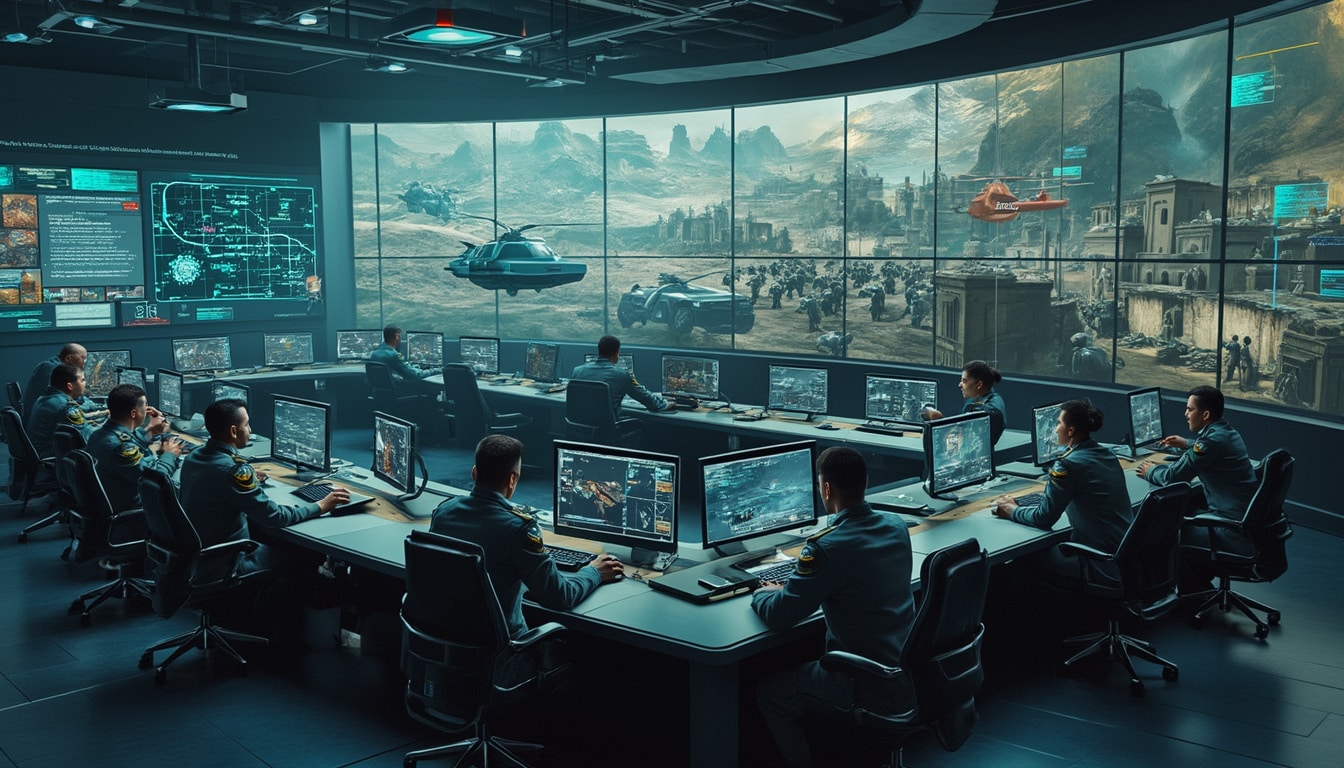*A silent revolution is taking place within the United States Army.* *The integration of military developers is redefining the creation of software capabilities.* *The Software Factory of Army Futures Command in Austin is at the forefront of this transformation.*
This innovative program aims to address the delays and failures encountered by external contractors in delivering new software platforms. By training a group of skilled soldiers, the Army is developing internal applications tailored to its specific needs. Among the flagship projects, the Carrera application, launched in 2021, quickly met legislative requirements regarding access to troops’ devices. With over 4,000 users in two weeks, the solutions developed by the Software Factory demonstrate their effectiveness and positive impact.

In a world where technology is evolving at a breakneck speed, the United States Army is reinventing itself to stay at the forefront of innovation. The Army Software Factory represents a strategic response to modern challenges, whether they are modest in scale or of great magnitude. By embarking on the internal development of software solutions, the Army aims to improve its efficiency, enhance its security, and offer better opportunities to its soldiers.
Table des matières
ToggleWhat is the Army Software Factory?
The Software Factory of the Army is a specialized unit created to develop applications and computer systems designed to meet the specific needs of the armed forces. Aligned with the Futures Command based in Austin, Texas, this initiative aims to internalize the software creation process, thereby reducing reliance on external subcontractors. According to Lieutenant Colonel Vito Errico, the unit’s director, the software factory has promised to regularly train cohorts of 25 to 30 personnel every six months, a promise it has successfully honored since its inception a little over a year ago.
How does the software factory address the current challenges of the Army?
The Army has recently faced several major challenges in developing its software capabilities. Delays in deploying new human resources platforms and failures during the launch of a new tuition assistance platform have raised questions in Congress. In response, the software factory presents itself as an effective solution, offering a more agile and controlled approach. One of the unit’s flagship projects has been Carrera, an application launched in February 2022, allowing National Guard and reserve soldiers to easily access temporary mission listings via their personal devices. This initiative not only met legislative deadlines but also attracted over 4,000 users in just two weeks.
What projects are developed by the software factory?
Beyond Carrera, the software factory has developed several other applications aimed at optimizing military operations. Among them are tools for centralizing preventive maintenance resources and streamlining logistics warehousing processes. These solutions allow for more efficient resource management and facilitate decision-making on the ground. For instance, the application aimed at centralizing preventive maintenance helps anticipate failures and plan necessary interventions, thus reducing downtime of essential equipment.
What is the impact of the software factory on soldiers?
One of the major strengths of the software factory lies in its approach to training and skill development for soldiers. Unit members receive practical and in-depth training in software engineering, allowing them to acquire valuable skills while serving. This duality of role contributes to greater job satisfaction and increased talent retention within the Army. According to Lt. Col. Errico, soldiers are happy to remain in these specialized roles, bringing unique value every day and directly contributing to the successes of the Army’s technological initiatives.
What is the future strategy for integrating developers into combat formations?
One of the key questions for the future of the software factory is the integration of trained developers into traditional combat formations. The Futures Command, in collaboration with personnel management and the Talent Management Task Force, is exploring various options to best utilize those skills in operational contexts. One possibility mentioned by defense experts is the creation of deployable development teams for future conflicts, where technology contractors could encounter similar restrictions to those faced in Iraq and Afghanistan.
How does the software factory influence the Army’s technological strategy?
Internal software creation provides the Army with greater flexibility and the ability to quickly adapt to technological changes. It also allows for better information security and greater control over development processes. Additionally, this initiative is part of a broader vision of the Army aiming to integrate more advanced technologies, such as the B-21 Raider, a next-generation stealth bomber. By developing its own tools and applications, the Army can better align its technological innovations with its specific operational needs.
What are the external collaborations influencing the software factory?
The software factory does not operate in isolation. It collaborates closely with other branches of the armed forces and industrial partners to optimize and interconnect artillery systems, as highlighted by the initiative to encourage European armies to interconnect their artillery systems. These collaborations enable knowledge exchange and harmonization of the technologies used, thereby enhancing the efficiency and coherence of multinational operations.
What are the future challenges for the Army’s software factory?
As the software factory continues to grow and adapt, it will face several challenges. One of the main ones is talent management, meaning the ability to train and retain skilled developers in a constantly evolving environment. Furthermore, the integration of new technologies such as artificial intelligence and machine learning requires constant technological monitoring and rapid adaptation of soldiers’ skills. Finally, the software factory will need to continue innovating while adhering to the strict security and confidentiality requirements inherent to the military domain.
How does the software factory contribute to the Army’s competitiveness on the global stage?
By developing internal software solutions, the United States Army strengthens its position as a technological leader on the global stage. This capacity for innovation enhances responsiveness to current and emerging threats while providing advanced tools to its units in the field. For example, developments in logistics and maintenance systems enable the Army to keep its equipment in optimal condition, thus guaranteeing operational superiority. Moreover, by investing in training soldiers in software engineering, the Army is preparing the next generation of military technology leaders.
What are the user experiences of the applications developed by the software factory?
User feedback from end users, namely soldiers, is essential for the success of the applications developed by the software factory. The Carrera application, for instance, has been widely adopted due to its real utility and ease of use, attracting over 4,000 users in two weeks. These positive responses reinforce confidence in the unit’s ability to meet the practical needs of the Army. Additionally, continuous feedback allows for improvements and adaptations of applications based on users’ changing needs, thus ensuring their relevance and effectiveness in the long term.
In what way is the software factory a model for other branches of the armed forces?
The success of the Army’s software factory could serve as a model for other branches of the armed forces seeking to internalize their technological development. By proving that internal creation can be more effective and better aligned with specific needs, the Army paves the way for similar transformation in other military domains. This approach could also inspire similar initiatives within governmental and clandestine organizations, thereby enhancing national defense capabilities on a broader scale.
What are the upcoming developments planned for the software factory?
The future of the Army’s software factory looks promising with several projects underway. Among these are initiatives to integrate cutting-edge technologies such as augmented reality and autonomous drones into military operations. Furthermore, the unit plans to expand its collaborative efforts with industrial and academic partners to accelerate innovation and ensure optimal technological monitoring. At the same time, mentoring and ongoing training programs are in place to ensure that soldiers remain at the forefront of the skills necessary to develop advanced software solutions.
How does the software factory contribute to the Army’s overall defense strategy?
The software factory plays a key role in the Army’s overall defense strategy by providing advanced technological tools that enhance operational capabilities. By developing internal solutions, the Army can better control and secure its systems, reduce deployment times, and quickly adapt its tools to the changing needs of the battlefield. This initiative is part of a broader vision of modernizing and digitizing the armed forces, aiming to ensure technological superiority against increasingly sophisticated adversaries.
#short_answer>
























